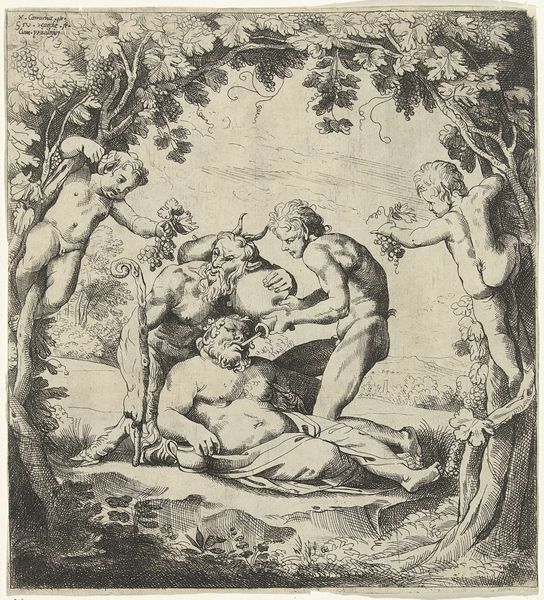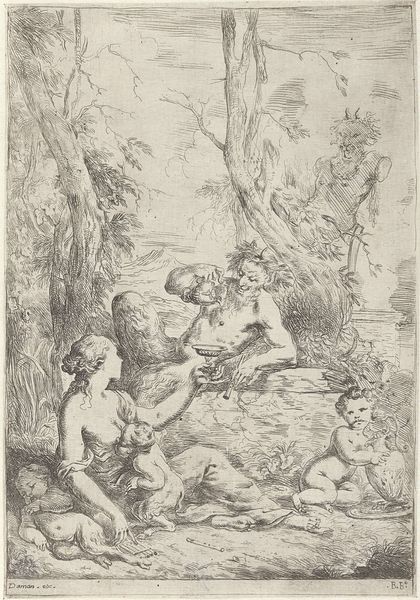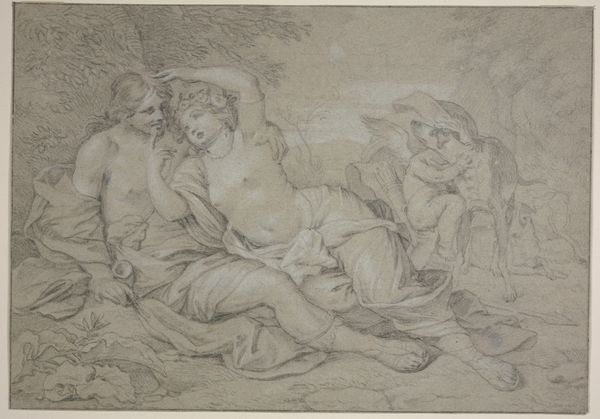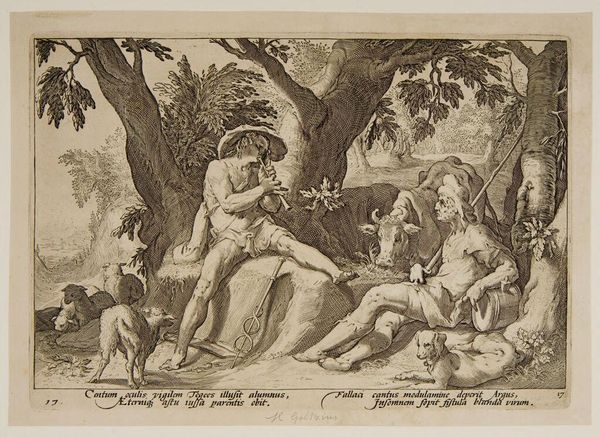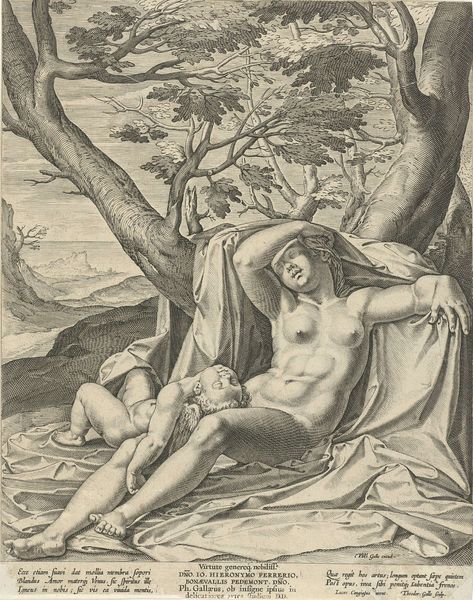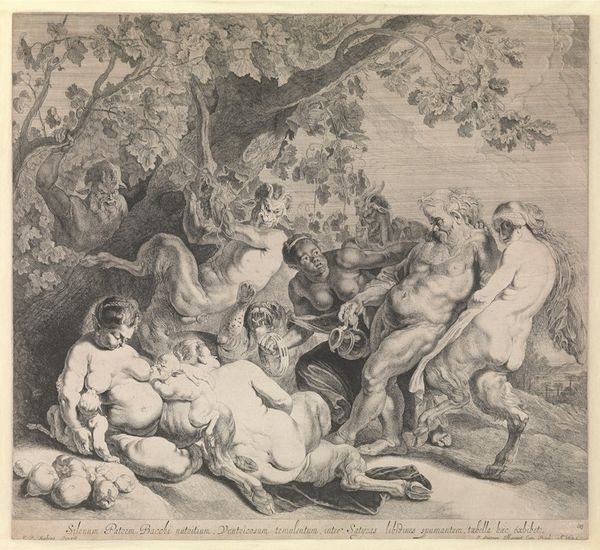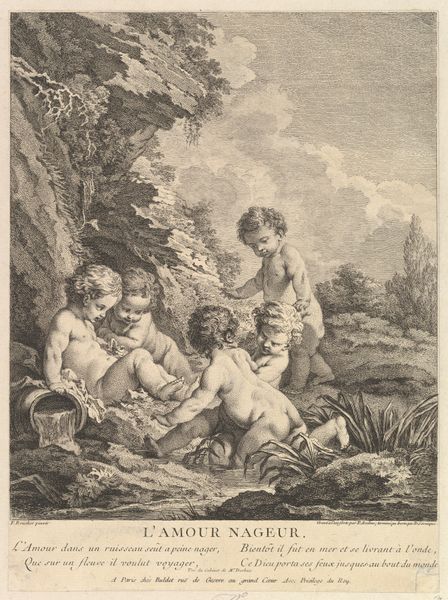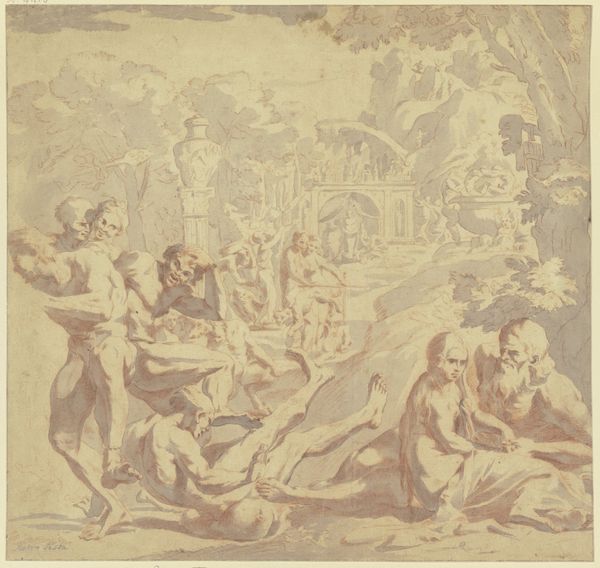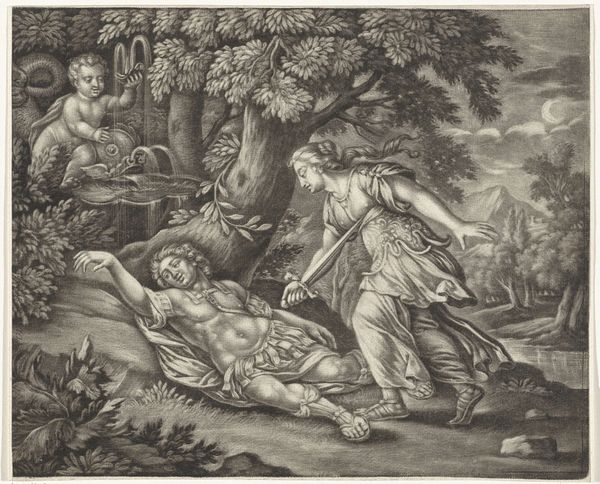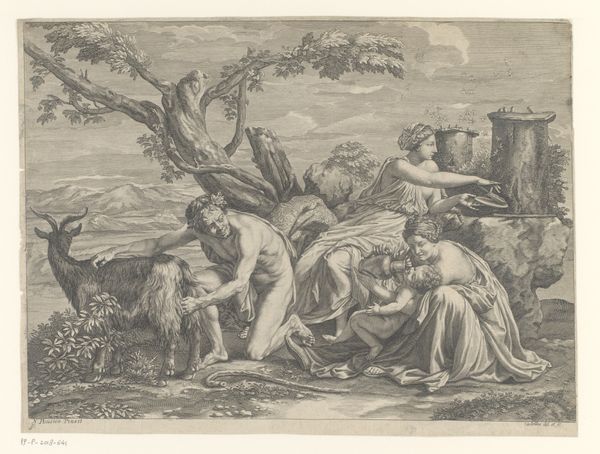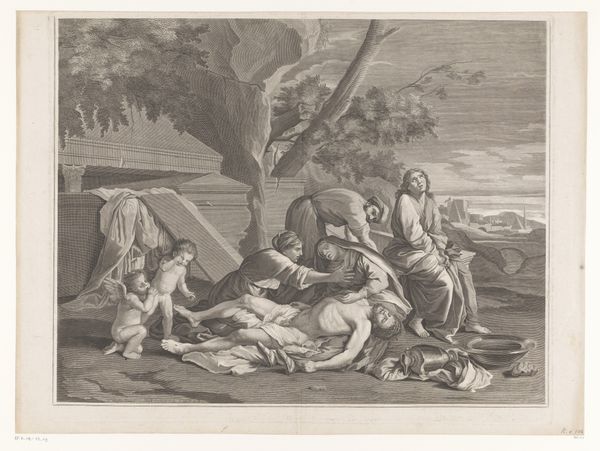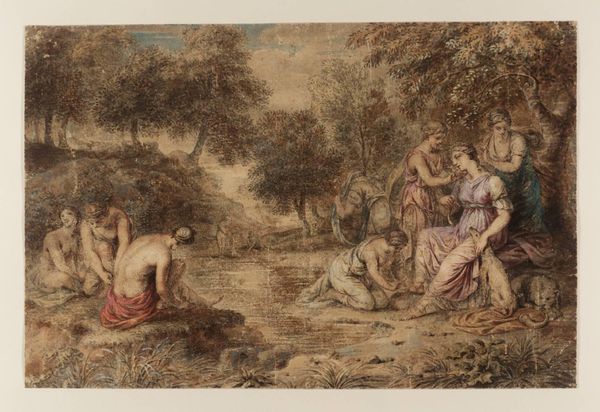
Dimensions: height 270 mm, width 370 mm
Copyright: Rijks Museum: Open Domain
Editor: This is "Two Satyrs Spying on a Sleeping Nymph" by Jean-Antoine Watteau, created between 1705 and 1721. It's currently housed in the Rijksmuseum. It feels incredibly…intimate, like a stolen glance. How do you interpret this scene? Curator: The intimacy you describe is precisely what Watteau cultivated. This image speaks volumes about the changing role of art and patronage. Watteau worked outside the established French Academy, selling primarily to private collectors. What impact do you think this might have had on his subject matter and style? Editor: Hmm, perhaps he felt freer to explore more sensual or even scandalous themes, since he wasn’t beholden to the Academy’s more rigid moral guidelines? Curator: Precisely! And this directly impacted the viewing experience. Paintings like this were likely intended for display in private homes, spaces of leisure and pleasure. Thus, the painting is designed to provoke a specific kind of encounter: a privileged viewer, surrounded by beauty, delighting in the imagined world on display before them. Where do you see evidence of this sensibility in the artwork itself? Editor: Well, there’s the very voyeuristic nature of the subject. We, the viewers, are complicit in the satyrs' spying. Also, the loose, sketch-like quality creates a sense of immediacy, like we are there, in the moment. Curator: Yes, and consider the classical allusions mixed with everyday life, this blend allowed for exploring desires in art without facing severe criticisms, therefore influencing its public appreciation and discourse about societal values. Editor: It’s interesting to consider how the work reflects a particular cultural moment of evolving social norms and the commercial art market! Thanks, that clarifies a lot. Curator: Likewise, seeing it from the view of contemporary market forces adds complexity that will surely enrich our audience.
Comments
No comments
Be the first to comment and join the conversation on the ultimate creative platform.
